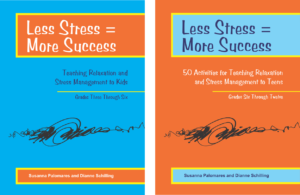Here’s a Sharing Circle Topic and activity you can use with your students to build an element of awareness that is getting a lot of attention these days. What does it take to understand the things that contribute to a relationship that is healthy and works for everyone involved. The topic for this Sharing Circle is, A PERSON I FEEL SAFE WITH…
 Here’s Your Monday Morning Sharing Circle.
Here’s Your Monday Morning Sharing Circle.
Enjoy! ![]()
A Person I Feel Safe With
Objectives:
The students will:
— identify safe and accepting relationships.
— describe specific behaviors that contribute to secure relationships.
Introduce the Topic:
In your own words say, Today our topic is, “A Person I Feel Safe With.” The world can seem like a pretty hostile place at times, with crowding, crime, and conflict between people and groups. Even in our daily lives, we experience the stress of competition and the press of time as we try to juggle our relationships and responsibilities. All of this makes it especially important that we have people in our lives with whom we can relax, knowing that we are safe and secure—not just physically, but emotionally. Who is such a person in your life? Tell us about someone who gives you a good feeling, who accepts and supports you, and always causes you to feel safe. This person could be an adult, child, parent, relative, or friend. Tell us specifically what the person does to cause you to feel secure in his or her presence. The topic is, “A Person I Feel Safe With.”
After everyone who wants to has shared, ask the following questions.
Discussion Questions:
1. What were the main reasons we gave for feeling safe with the people we described?
2. How do you know when someone accepts you just the way you are?
3. How can we become people with whom others feel safe?
4. Does feeling safe with a person mean that you and that person never disagree or experience conflicts? Explain.
Do you want more information?
• Leading a Sharing Circle • Sharing Circle Rules
• Books and Resources • Free Activities • Subscribe
Here’s How It’s Done
Gather everyone into a circle.
Explain the rules for sharing, and get agreement from everyone that they will follow the rules.
Sharing Circle Rules:
• Everyone gets a turn to share, including the leader.
• You can skip your turn if you wish.
• Listen to the person who is sharing.
• There are no interruptions, probing, put-downs, or gossip.
• Share the time equally.
After everyone has shared, who wants to share, ask the discussion questions.
Get more in-depth information here.
Just click HERE to open a fully reproducible PDF of this Sharing Circle activity…
If you like our blog resources and would like to receive them regularly, please subscribe here or on our website at www.InnerchoicePublishing.com
Thanks so much for reading!
Susanna
PS: If a friend forwarded this to you, you can just sign up to get your own weekly Innerchoice Blog.

